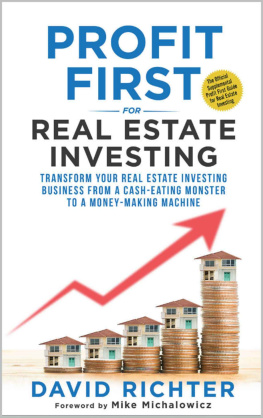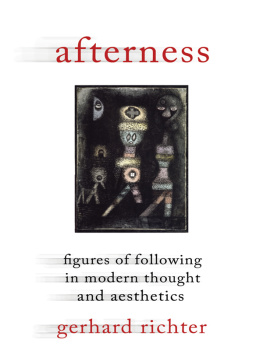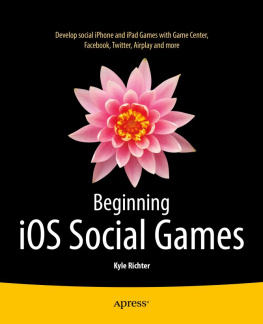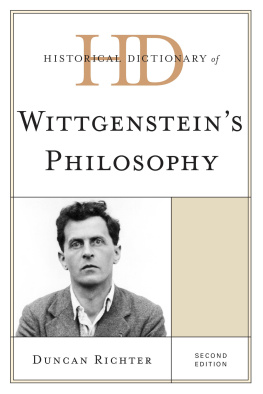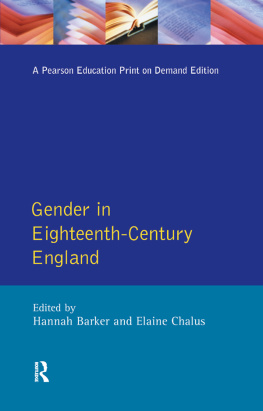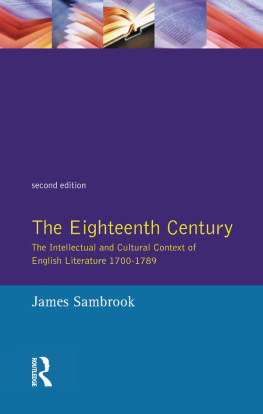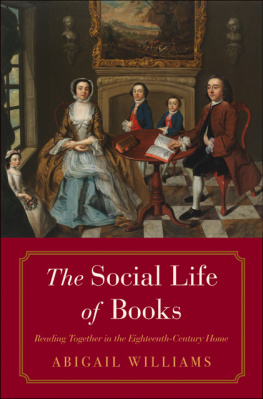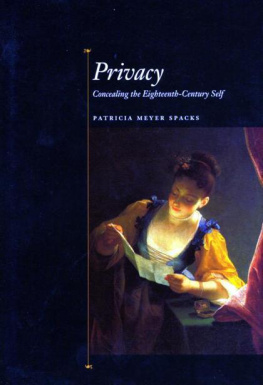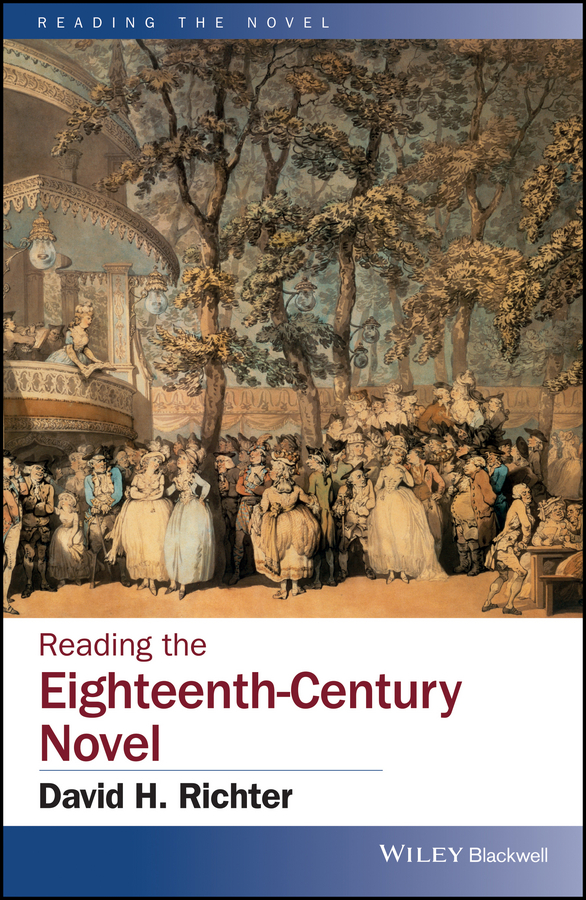
Table of Contents
Guide
Pages
READING THE NOVEL
General Editor: Daniel R. Schwarz
The aim of this series is to provide substantive critical introductions to Reading Novels in the British, Irish, American, and European traditions
Published
| Reading the Nineteenth-Century Novel | Harry E. Shaw and Alison Case |
| Reading the Modern British and Irish Novel 18901930 | Daniel R. Schwarz |
| Reading the Novel in English 19502000 | Brian W. Shaffer |
| Reading the American Novel 18651914 | G. R. Thompson |
| Reading the American Novel 17801865 | Shirley Samuels |
| Reading the American Novel 19102010 | James Phelan |
| Reading the Contemporary Irish Novel 19872007 | Liam Harte |
| Reading the European Novel to 1900 | Daniel R. Schwarz |
| Reading the Eighteenth-Century Novel | David H. Richter |
Reading the EighteenthCentury Novel
David H. Richter
This edition first published 2017
2017 John Wiley & Sons Ltd
All rights reserved. No part of this publication may be reproduced, stored in a retrieval system, or transmitted, in any form or by any means, electronic, mechanical, photocopying, recording or otherwise, except as permitted by law. Advice on how to obtain permission to reuse material from this title is available at http://www.wiley.com/go/permissions.
The right of David H. Richter to be identified as the author of this work has been asserted in accordance with law.
Registered Offices
John Wiley & Sons, Inc., 111 River Street, Hoboken, NJ 07030, USA
John Wiley & Sons Ltd, The Atrium, Southern Gate, Chichester, West Sussex, PO19 8SQ, UK
Editorial Office
9600 Garsington Road, Oxford, OX4 2DQ, UK
For details of our global editorial offices, customer services, and more information about Wiley products visit us at www.wiley.com.
Wiley also publishes its books in a variety of electronic formats and by print-on-demand. Some content that appears in standard print versions of this book may not be available in other formats.
Limit of Liability/Disclaimer of Warranty
While the publisher and authors have used their best efforts in preparing this book, they make no representations or warranties with respect to the accuracy or completeness of the contents of this book and specifically disclaim any implied warranties of merchantability or fitness for a particular purpose. It is sold on the understanding that the publisher is not engaged in rendering professional services and neither the publisher nor the author shall be liable for damages arising herefrom. If professional advice or other expert assistance is required, the services of a competent professional should be sought.
Library of Congress Cataloging-in-Publication Data
Name: Richter, David H., 1945 author.
Title: Reading the eighteenth-century novel / David H. Richter.
Description: First edition. | Hoboken : John Wiley & Sons, Inc., 2017. | Series: Reading the novel |
Includes bibliographical references and index.
Identifiers: LCCN 2016053412 (print) | LCCN 2017000756 (ebook) | ISBN 9781118621141
(hardback) | ISBN 9781118621103 (paper) | ISBN 9781118621134 (pdf) |
ISBN 9781118621110 (epub)
Subjects: LCSH: English fiction18th centuryHistory and criticism. | Books and reading
Great BritainHistory18th century. | BISAC: LITERARY CRITICISM / General.
Classification: LCC PR851 .R53 2017 (print) | LCC PR851 (ebook) | DDC 823/.509dc23
LC record available at https://lccn.loc.gov/2016053412
Cover design: Wiley
Cover image: Vauxhall Gardens, by Thomas Rowlandson. London, England, 1784 V&A Images/Alamy Stock Photo
To Chris Fanning, Harry Heuser, Matt Williams, Will Hatheway, Carrie Shanafelt, Janne Gillespie, Shang-yu Sheng, and Eugene Slepov, my students at the CUNY Graduate Center from whom I have learned so much.
Acknowledgments
Although the title page might suggest a solo performance, Reading the EighteenthCentury Novel could not have come into existence without the assistance of a team of generous and skillful colleagues and friends in the worlds of academia and publishing. Let me start out with the general editor of the Reading the Novel series, Professor Daniel Schwarz of Cornell, who asked me to undertake a onceorphaned project. I had help with the prospectus and with chapter design from professors Alison Case of Williams College and James Phelan of Ohio State, authors of other volumes in the series. Dr. Stephen Gregg of Bath Spa University and Professor Robert DeMaria of Vassar College reviewed the manuscript at various stages in its development; their hints and suggestions were always on target, but any errors of fact or emphasis are my own. At WileyBlackwell, I worked first with Emma Bennett, who signed the book, then with Deirdre Ilkson, Emily Corkhill, and Bridget Jennings, and finally with Rebecca Harkin, under whose watchful editorial eye the book was completed. The attractive object you are holding was created by Manish Luthra and Sakthivel Kandaswamy, in charge of production for WileyBlackwell. Doreen Kruger was my savvy and energetic copy editor, who never asked me a question when she could look it up herself. Research was carried out at the British Library, the Mina Rees Library at the CUNY Graduate Center, the Rosenthal Library of Queens College. I finished the book with the aid of a Fellowship Leave from my department at Queens College. Finally, I would like to dedicate this book to the wonderful students who over two decades have taken my course in the origin and development of the English novel at the CUNY Graduate Center. Among these I would like to single out Christopher Fanning, Harry Heuser, Matt Williams, Will Hatheway, Carrie Shanafelt, Janne Gillespie, Shangyu Sheng, and Eugene Slepov: I have learned so much from you and hope to continue doing so, wherever you may go.
Chapter 1
The World That Made the Novel
This book is about reading the English novel during the long eighteenth century, a stretch of time that, in the generally accepted ways of breaking up British literary history into discrete periods for university courses, begins some time after the Restoration of King Charles II in 1660 and ends around 1830, before the reign of Queen Victoria. At the beginning of this period, the novel can hardly be said to exist, and writing prose fiction is a mildly disreputable literary activity. Around 1720, Daniel Defoes fictional autobiographies spark continuations and imitations, and in the 1740s, Samuel Richardson and Henry Fieldings novels begin what is perceived as a new kind of writing. By the end of the period, with Jane Austen and Walter Scott, the novel has not only come into existence, it has developed into a moreorless respectable genre, and in fact publishers have begun to issue series of novels (edited by Walter Scott and by Anna Barbauld, among others) that establish for that time, if not necessarily for ours, a canon of the English novel. With the decline of the English drama and the almost complete eclipse of the epic, the novel has become by default the serious literary long form, on its way to becoming by the midnineteenth century, with Dickens, Thackeray, and Eliot, the preeminent genre of literature. This chapter will consider how and why the novel came to be when it did.
Next page

